Some days you feel more confident finding the pot of gold at the end of the rainbow or winning $30 million in Tattslotto than going toe-to-toe with an estuary perch.
Estuary perch are better known as being the ghost of the estuary and while they are quite abundant throughout Victoria and Southern New South Wales, they are definitely not the easiest fish to catch.
There is a strange enigma about estuary perch that I never really understood until a few years ago, well that was until I began the search. When it comes to targeting estuary perch there is very little information spoken about them. Maybe it’s because the anglers that do, tend to catch and release and say very little about their exploits. So when you decide that today is the day that you’ll head out to catch one, you really are all on your own.
EPs, as they are also known, certainly are the most prehistoric fish of the estuary that deserves the most respect. Their growth rate is extremely slow, making an estimated 45cm model around 40 years of age. Still, when the sun is out and the water is warm, they will eat just about anything that comes within reach of their big bucket mouth.
Nothing comes closer to a barramundi in this neck of the woods, which is why they have the nick name ‘southern barra’.
Perch are one of those species that love to eat, just take one look at their body design coupled with a mouth capable of swallowing a grown man’s fist, they are the ultimate predator of the estuary. This species has adapted so well to its environment that when it ambush’s prey, drawing open that huge bucket mouth and sucking in large quantities of water, along with the intended meal, has enabled this particular species to survive in such dense locations.
Take a barramundi for example; they live in rivers, hard up in mangrove roots, around fallen timber and wherever there is a drain that will funnel bait on the abating tide. Perch are no different, in fact these characteristics are identical between the two but in Victoria, we still have to wait for the summer months before the fish are at their most active.
Mainly found in estuary systems, they will move between rivers and inhabit bays and inlets.
Just like barramundi, EP know their local terrain and where baitfish are funnelled into drains and channels from the force of the current and tidal pressure. As anglers, understanding their feeding habits will give us some indication as to where they can be caught but these are no textbook fish, often leading you to fish in areas they are not.
Finding potential areas where they may hold in a tidal waterway is best understood at low tide. Paddling, peddling or motoring through a waterway on low tide will give you an idea about the bottom terrain showing the structures where the fish could be during the high tides. Then all you have to do is to come back when these low lying areas are flooded and try your luck.
While EP are spread from one end of the state to the other, pockets of fish in Port Phillip Bay, Western Port and Gippsland are usually kept quite close to the heart of those that know where they reside. Anglers targeting EP tend to hit up Gippsland more so than anywhere west of Inverloch. Once you have a little understanding about these ghosts of the estuary, the adventure really starts when you begin to explore closer to Melbourne.
EP are you’re typical hunter, they won’t necessarily ball up a school of baitfish like salmon or bust up on the surface like tuna but they certainly will find a location where the current will funnel baitfish and setup residence nearby. EP tend to use their location to their advantage by letting the elements do all the work for them. They do this by holding in a snag or mangrove root and wait for current to bring the food to them.
For us, we have to find these locations and work them thoroughly to instigate a strike. Toss in the wrong lure and the fish will scatter, toss in the right one and you’ll quickly be taken to the snags or drag a fish from its lair if you’re in tune with their characteristics.
Knowing that EP will hold in one particular location waiting for a meal to come to them, you need to have a precision point cast on you. You really only get one chance per snag and have to be able to pitch a lure right into the back of the snag with a direct hit. With one twitch, drag the lure down under the water without moving it no more than 10” from where it initially landed and with a quick pause, the lure will sit hovering in the water column. Well that is providing you just cast a suspending lure. Any fish holding under that snag will watch it for a second to sus it out. Another light twitch will move the lure another 3-5” and in that split second, the fish reacts in the blink of its eye thinking the baitfish is trying to escape before sucking it in only to feel the sharp prick from two sets of treble hooks before trying to run back deep into the snag.
This is the point, anglers need to be at the top of their game and wrench back to set the hook in the same split second as the fish realised this bait was not a soft and tasty morsel. Having securely set the hooks, you then have to get up it and pull the fish away from the structure and into safe water to battle it back to the boat.
Sometimes for a specific reason one particular lure does in fact work far better than anything else in the marketplace. To some readers, they may not understand how this is possible but I can honestly say that I have seen this type of scenario work firsthand, especially on yellowbelly and cod with Jackal TN60 V’s cheap copies. It all comes down to the action and sound and if a cheaper lure hasn’t got what it takes, you’ll be putting in a lot more casts than you have too if you’d just spent that extra $5 initially.
Estuary perch know the exact reaction a baitfish has when it sees a dozen hungry estuary perch hiding under a snag. In this case, the right lure that acts in the exact way to mimic that persona of a fleeing baitfish is what will get the end result.
The most important factors to look for in a lure for perch is its action, colour and size. Suspending lures in the 40-75mm range have been successful. Colour choice is always difficult as you’d think lures are made to catch anglers, not fish. I like to select lures based on their natural look. If I can find something that fits the bill in the size category, action category and in a natural looking colour, I am sure it will find its way into my lure collection. In my collection, you’ll always find a hidden stash of Duel Hardcore 50mm Minnows, Yo-Zuri EBA Shads and the number one soft plastic, Keitech’s 3” Swing Impact.
Chasing EP is certainly no easy task and requires a great deal of knowledge, research and understanding. A ghost of the estuary, only time on the water will expose the hidden secrets that surround the world of the estuary perch.
Reads: 4340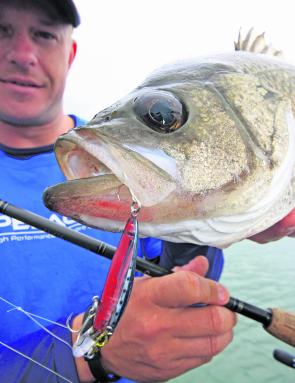
There are many lures which EP’s favour. Duel’s 50mm Hardcore Minnow is downright deadly.

If there is something to remember before embarking on an EP adventure, it is making sure you have the right lures in your arsenal. Suspending lures always manage to be the most favoured.

Don’t underestimate rogue bunches of snags. Even if they are not in the confines of an estuary, they can still hold EPs.
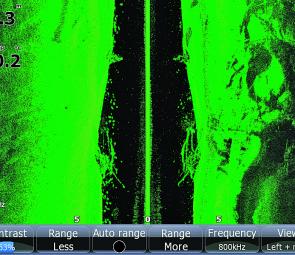
Lowrance’s structure scan make fishing for estuary perch a lot simpler.
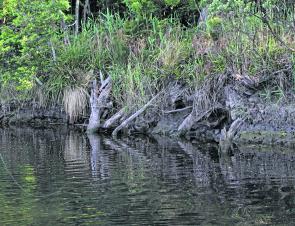
Estuary perch will hold deep in the back of snags. If you want to catch them, precision casting accuracy is paramount.
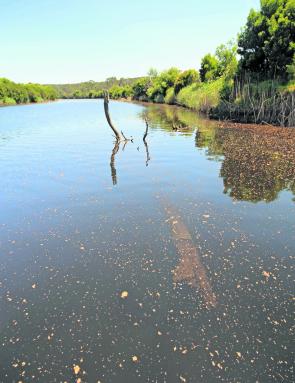
Submerged logs in a river are also a likely location to find fish.
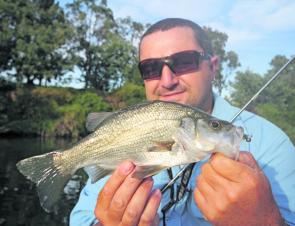
They may not always be big and as elusive, but everyone is a reward.
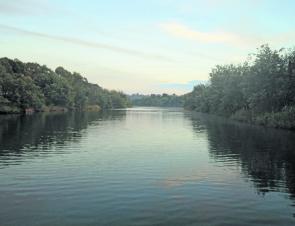
When motoring up a river, it is daunting knowing where to begin. A fish finder with structure scan technology will make the task much easier.

Even when motoring along a river, fish can be spotted holding beneath overhanging tree branches.

When on the search for perch, always work the bank edges.




